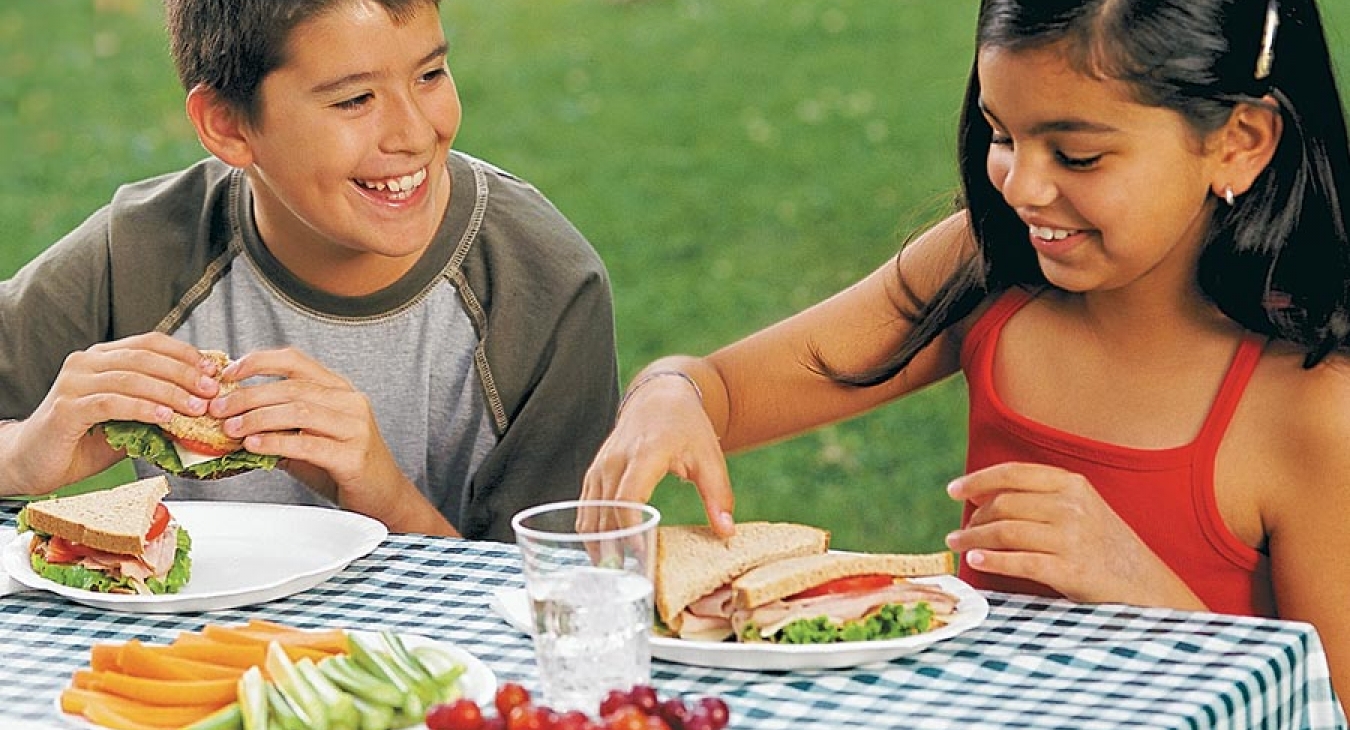Ah, Spring! The happy sounds of children returning to playgrounds are everywhere and you’re working to ensure that the children have what they need to have a fun and enriching play experience—a stimulating and safe space, proper supervision and the energy to play.
Energy? Some children seem to ooze energy, right? But as we all know, it’s hard work for parents, caregivers and community-based organizations to ensure that young people have the nutrition they need to be active and healthy. It’s even more difficult to educate young people about the important role that physical activity and good nutrition will play as they grow into adulthood.
Unfortunately, unhealthy eating and physical activity patterns are placing our children at risk. More than 14 percent of children and 11 percent of adolescents are overweight. Only one in five children gets the recommended five servings of fruit and vegetables each day and only one in three school-age children participates in regular physical activity. During the last two decades, the percentage of overweight children has nearly doubled and the percent of overweight adolescents has tripled. Related health problems, such as the childhood onset of Type II diabetes, are also sharply increasing among children and young adults.
The federal government, in partnership with states, schools and community organizations, has been working to ensure that parents and educators have the resources they need to motivate kids to make healthy choices. The United States Department of Agriculture’s Food,
Nutrition and Consumer Service
The Food & Nutrition Service (FNS) administers 15 food and nutrition assistance programs. FNS provides one in five people, including children and needy families, with better access to food, a healthful diet, and nutrition education. You can find information about these programs at www.fns.usda.gov.
FNS has developed a wide-range of educational resources designed for use by children and their caregivers as part of a national, long-term effort to promote physical activity along with a healthy diet. You can find these resources at www.fns.usda.gov/fns/nutrition.htm.
Combining Nutritious Food with Active Lifestyles
As the summer months approach, you are probably planning summer programs for children. You may also partner with local organizations to provide after-school activities for children during the school year. These activity programs are both excellent opportunities to provide nutritious meals and snacks to hungry and active kids at play.
USDA partners with states and community-based organizations to provide nutritious meals through the Summer Food Service Program and the after-school snack component of the Child and Adult Care Food Program. The National School Lunch Program also provides reimbursement for these types of meals through partnerships with local schools.
As you plan your summer or after-school activities, consider adding a meal or snack service. It’s very likely that a local organization or school is already preparing meals and would be willing to partner with your park or playground to expand their services.
If there isn’t a participating organization in your community, you can provide meals and snacks directly to children by becoming a Summer Food Service Program sponsor or after school snack provider.
Adding nutritious meals to your playground activity is easy and will round out your programming to include both nutritious food and play, helping kids achieve healthy lifestyles. Summer Food and Child and Adult Care Food Program contact information for your state is available online at www.fns.usda.gov.
MyPyramid for Kids
Last autumn, USDA launched MyPyramid for Kids, a child-friendly adaptation of the MyPyramid Food Guidance System, which was revised and updated in 2005. Both the adult and children’s versions of the pyramid now include a physical activity component and stress the need to find a balance between physical activity and food.
The MyPyramid for Kids slogan is “Eat Right. Exercise. Have Fun.” The new MyPyramid for Kids symbol represents the recommended proportion of food from each food group and focuses on the importance of making smart food choices every day. It teaches children to choose healthier foods, to eat more of some food groups than others and to eat foods from every food group every day.
The symbol also includes images of children engaging in a wide range of physical activities, including running, playing ball, skateboarding and walking the dog. These images remind children that physical activity should be done every day.
Through educational materials and lesson plans, MyPyramid for Kids encourages all of us to work together to help children make healthier food choices and be active every day. You can find more information about MyPyramid for Kids at www.mypyramid.gov. USDA’s Power Panther Touts “Eat Smart. Play Hard.”
To encourage families to adopt behaviors that are consistent with the MyPyramid Food Guidance System, USDA developed the “Eat Smart. Play Hard” campaign. The campaign is designed to convey science-based messages about the importance of physical activity and healthy eating. The “Eat Smart. Play Hard” spokescharacter, Power Panther, helps promote the campaign by highlighting the importance of physical activity and healthy eating. Since physical activity and dietary habits are established very early in life, it is important to teach proper nutrition and exercise as early as possible.
This spring and summer Power Panther will be touring the country. Why not invite Power Panther to your playground or park to promote the “Eat Smart. Play Hard” message? The Food, Nutrition and Consumer Service website at www.fns.usda.gov will provide information how to contact Power Panther for an appearance. Local Wellness Policies: Coming to a School Near You
Another opportunity for playgrounds to play a starring role in promoting active and healthy lifestyles is through the new federally mandated school wellness policies. As part of the federal government’s efforts to encourage children to adopt healthy lifestyle behaviors, Congress recently passed a law that requires each school in the country that participates in USDA’s National School Lunch Program to develop a comprehensive school wellness policy.
By the school year 2006, wellness policy committees must set goals for physical activity, nutrition education, campus food provision and other school-based activities designed to promote student wellness. The law requires the involvement of parents, students, school food service staff, the school board, school administrators and the local community in the development of the policy.
You can get involved in this effort by contacting your local school district and volunteering to participate in the wellness policy committees. Your partnerships with other community-based organizations to provide nutritious meals and activity programs will be a valuable asset to this effort. Ensuring that children have the energy they need to lead active and healthy lifestyles is hard work, indeed. Teaching the value of physical activity and proper nutrition has never been more important
From playgrounds to the school lunch line, children need to receive consistent, clear and compelling messages about the importance of physical activity and a healthy diet.
By working together, communities, schools and state and federal agencies can address the rising rates of obesity and overweight among children and ensure that our kids have the tools they need to engage in healthier lifestyles.








Add new comment